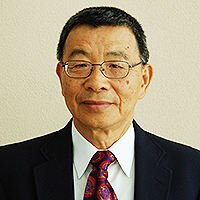Zn2+ Ions-Immune Virucidal activities for children and adults with preventions against 2019-nCoV and COVID-19 infection
Published on: 28th July, 2020
OCLC Number/Unique Identifier: 8873197329
Zinc induced pediatric preventing respiratory 2019-nCoV is required that supplementation with zinc gluconate 20 mg in Zn deficient children resulted in a nearly twofold reduction of acute lower respiratory infections as well as the time to recovery. Zinc supplementation in children is associated with a reduction in the incidence and prevalence of pneumonia. Preventing 2019-nCoV pneumonia is required that zinc supplementation alone (10 to 20 mg) for more than 3 months significantly reduces in the rate of pneumonia. zinc pediatric intake may be required to be effective range 10~20 mg/d for 2019-CoV prevention, 10~30 mg/d for reduction of COVID-19 bronchitis, and 20~30 mg/d for recovery from COVID-19 pneumonia, in which Zn2+ could bind with viral surface proteins by Zn2+ions-centered tetrahedrally coordination pattern.
On the other hand, for aults, the zinc-homeostatic immune concentration may provide a protective role against the COVID-19 pandemic, likely by improving the host’s resistance against viral infection. 50 mg of zinc per day might provide an additional shield against the COVID-19 pandemic, possibly by increasing the host resistance to viral infection to minimize the burden of the disease. In order to prevent that an outbreak of respiratory sickness caused by a novel coronavirus (COVID-19) has become a serious public threat and disrupted many lives,assessing the efficacy of FDA-approved Zn-ejector drugs such as disulfiram combined with interferon to treat COVID-19 infected patients has been proposed. The key strategies for preventing lung damages include avoiding direct lung infection, altering host-virus interactions, promoting immune responses, diluting virus concentrations in lung tissues by promoting viral migration to the rest of the body, maintaining waste removal balance, protecting heart function and renal function, avoiding other infections, reducing allergic reactions and anti-inflammatory. The interactions had been found on the binding specificity by Zn2+ ions-centered tetrahedral geometric coordination of the inhibitors against 3C and 3C-like proteases. In addition, transient zinc chelation TPEN and EPDTC have been noted as preventing virus replication.
Zinc-induced ROS production in COVID-19 respiratory ailment and pneumonia occurs both in children and adults. In children.
ROS production in zinc (Ⅱ)-immune pediatric patient with COVID-19 bronchitis and pneumonia cannot be elucidated yet. In adults, zinc induced ROS generation in pulmonary COVID-19 infected cells is that alterations of ROS-producing and scavenging pathways that are caused by respiratory viral infections are implicated in inflammation, lung epithelial disruption, and tissue damage, and, in some cases, even pulmonary fibrosis. The involvement of oxidative stress in cell deaths caused during RNA virus infection and ROS production is correlated with host cell death.
Effect of Azithromycin on Lung Function and Pulmonary Exacerbations in Children with Post-infectious Bronchiolitis Obliterans. A Double-blind, Placebo-controlled Trial
Published on: 28th February, 2024
Introduction: Acute lower respiratory infection (ALRI) of viral etiology is a frequent consultation in pediatrics. Post-infectious bronchiolitis obliterans (PIBO) is a rare and potentially severe disorder following ALRI, characterized by partial or complete obstruction of the small airways by inflammatory tissue. There is evidence that macrolides reduce morbidity and mortality in diffuse panbronchiolitis, which may have similar inflammatory and obstructive components.We hypothesized that the effect of azithromycin (AZ) may improve lung function and reduce pulmonary exacerbations in PIBO.MethodsStudy design: A double-blind, randomized, placebo-controlled trial.Patients: We enrolled patients with PIBO followed-up at the Pulmonology department between 5 years to 18 years.Treatment regimen: The patients were randomized to receive active drug or placebo three times a week. Clinical evaluation: Clinical evaluation, pulse oximetry, lung function, and 6-min walk test were performed before and after study initiation and at 1, 3, and 6 months.CT scan and a quality of life questionnaire were performed at the beginning and the end of the Study.Results: 29 patients, 15 in G1 (10 males) and 14 in G2 (7 males) were included.There were no significant differences in FVC, FEV1, TLC, RV, or sGaw between the treatment group and controls. In addition, no significant differences were observed in exacerbations, quality of life questionnaire, or HRCT scan scores.Conclusion: No differences were observed between the groups. Further studies are necessary to allow us to find a better treatment, as azithromycin does not seem to be efficacious.
















